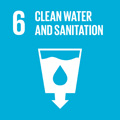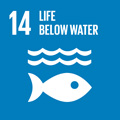- Docente: Alessandro Girolamo Rombolà
- Credits: 6
- SSD: CHIM/01
- Language: English
- Moduli: Alessandro Girolamo Rombolà (Modulo 1) Chiara Samorì (Modulo 2)
- Teaching Mode: In-person learning (entirely or partially) (Modulo 1); In-person learning (entirely or partially) (Modulo 2)
- Campus: Ravenna
- Corso: Second cycle degree programme (LM) in Environmental Assessment and Management (cod. 5900)
Learning outcomes
At the end of the course, the student will acquire the basic knowledge of the chemistry of the sea, the chemical composition of the oceans and the factors that govern it. The student will be able to describe the distribution of the elements/chemicals in the marine environment as a function of the chemical reactivity and interaction with the main physical and biological processes.
Course contents
- State of the coastal and marine environment
- Regional, national and international monitoring practices and programmes
- Pollution of coastal and marine environment
- Pollution deriving from organic matter: BOD, COD, organic load
- Heavy metals: in-depth study of the Minamata Bay case
- Sources, environmental fate, and effects of Persistent Organic Pollutants (POPs) in the marine environment.
- Sewage contamination and its impact on the marine environment
- Overview of analytical methodologies for seawater and sediments analysis
- The use of sensor technology
- Case studies of impacted marine environments
Readings/Bibliography
Marine Pollution (R. Beiras)
Marine Pollution (R.B Clark)
Teaching methods
The course includes lectures, in-depth study of scientific articles and examples of case studies.
Assessment methods
The exam will be oral and will aim to verify the achievement of the main educational objectives. The student must be able to understand the quantitative and qualitative aspects of the various types of pollution treated.
Teaching tools
The lessons will be held with the aid of computer supports for the projection of texts and images. The course slides are usually left available to students at the end of each lesson (using a mailing list created at the beginning of the lessons)
Office hours
See the website of Alessandro Girolamo Rombolà
See the website of Chiara Samorì
SDGs



This teaching activity contributes to the achievement of the Sustainable Development Goals of the UN 2030 Agenda.
